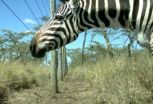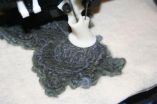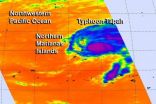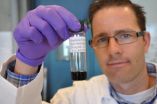(Press-News.org) Washington, DC—Cancer patients who have higher levels of vitamin D when they are diagnosed tend to have better survival rates and remain in remission longer than patients who are vitamin D-deficient, according to a new study published in the Endocrine Society's Journal of Clinical Endocrinology & Metabolism (JCEM).
The body naturally produces vitamin D after exposure to sunlight and absorbs it from certain foods. In addition to helping the body absorb the calcium and phosphorus needed for healthy bones, vitamin D affects a variety of biological processes by binding to a protein called a vitamin D receptor. This receptor is present in nearly every cell in the body.
"By reviewing studies that collectively examined vitamin D levels in 17,332 cancer patients, our analysis demonstrated that vitamin D levels are linked to better outcomes in several types of cancer," said one of the study's authors, Hui Wang, MD, PhD, Professor of the Institute for Nutritional Sciences at the Shanghai Institutes for Biological Sciences at the Chinese Academy of Sciences in Shanghai, China. "The results suggest vitamin D may influence the prognosis for people with breast cancer, colorectal cancer and lymphoma, in particular."
The meta-analysis looked at the results of 25 separate studies that measured vitamin D levels in cancer patients at the time of diagnosis and tracked survival rates. In most of the research, patients had their vitamin D levels tested before they underwent any treatment for cancer. The study found a 10 nmol/L increase in vitamin D levels was tied to a 4 percent increase in survival among people with cancer.
Researchers found the strongest link between vitamin D levels and survival in breast cancer, lymphoma and colorectal cancer. There was less evidence of a connection in people with lung cancer, gastric cancer, prostate cancer, leukemia, melanoma or Merkel cell carcinoma, but the available data were positive.
"Considering that vitamin D deficiency is a widespread issue all over the world, it is important to ensure that everyone has sufficient levels of this important nutrient," Wang said. "Physicians need to pay close attention to vitamin D levels in people who have been diagnosed with cancer."
INFORMATION:
Other authors of the study include: Mian Li, Peizhan Chen, Jingquan Li, Ruiai Chu and Dong Xie of the Institute for Nutritional Sciences at the Shanghai Institutes for Biological Sciences.
The study, "The Impacts of Circulating 25-Hydroxyvitamin D Levels on Cancer Patient Outcomes: A Systematic Review and Meta-Analysis," is scheduled to appear in the July issue of JCEM.
Founded in 1916, the Endocrine Society is the world's oldest, largest and most active organization devoted to research on hormones and the clinical practice of endocrinology. Today, the Endocrine Society's membership consists of over 17,000 scientists, physicians, educators, nurses and students in more than 100 countries. Society members represent all basic, applied and clinical interests in endocrinology. The Endocrine Society is based in Washington, DC. To learn more about the Society and the field of endocrinology, visit our site at http://www.endocrine.org. Follow us on Twitter at https://twitter.com/#!/EndoMedia.
Vitamin D may raise survival rates among cancer patients
Analysis finds strongest evidence of benefit in breast, colorectal cancers
2014-04-29
ELSE PRESS RELEASES FROM THIS DATE:
Study: WHO tool underestimates need for osteoporosis treatment
2014-04-29
Washington, DC—The World Health Organization's tool for assessing bone fracture risk underestimates the true dangers for people who are younger than 65 or have been treated for a single broken bone, according to a new study published in the Endocrine Society's Journal of Clinical Endocrinology & Metabolism (JCEM).
A WHO task force developed the Fracture Risk Assessment Tool (FRAX) to help predict the likelihood of adults between the ages of 40 and 90 breaking a bone. FRAX is designed to evaluate the chances that a person will break a bone in a minor fall, which is called ...
Declines in large wildlife lead to increases in disease risk
2014-04-29
In the Middle Ages, fleas carried by rats were responsible for spreading the Black Plague. Today in East Africa, they remain important vectors of plague and many other diseases, including Bartonellosis, a potentially dangerous human pathogen.
Research by Hillary Young, assistant professor in UC Santa Barbara's Department of Ecology, Evolution and Marine Biology, directly links large wildlife decline to an increased risk of human disease via changes in rodent populations. The findings appear today in the Proceedings of the National Academy of Sciences Early Online Edition.
With ...
Chronic stress heightens vulnerability to diet-related metabolic risk
2014-04-29
New research out of UC San Francisco is the first to demonstrate that highly stressed people who eat a lot of high-fat, high-sugar food are more prone to health risks than low-stress people who eat the same amount of unhealthy food.
"Chronic stress can play an important role in influencing biology, and it's critical to understand the exact pathways through which it works." said Kirstin Aschbacher, PhD, an assistant professor in the UCSF Department of Psychiatry and lead author. "Many people think a calorie is a calorie, but this study suggests that two women who eat the ...
GWAS study ties ABCC9 anomalies, sulfonylurea exposure to HS-Aging
2014-04-29
LEXINGTON, Ky. (April 29, 2014) -- A genome-wide association study (GWAS) led by Peter Nelson, MD, PhD, of the Sanders-Brown Center on Aging at the University of Kentucky, and David Fardo, PhD, of UK's Department of Biostatistics, has provided new insight into Hippocampal Sclerosis of Aging (HS-A), a common disease affecting the elderly.
Researchers from 16 different institutions compared 363 persons with autopsy-proven HS-A to a control group of 2,303 other individuals in an attempt to identify genetic predisposition to HS-Aging.
Dr. Nelson and his team found that ...
Carnegie Mellon-Disney researcher invents 3-D printing technique for making cuddly stuff
2014-04-29
PITTSBURGH—Soft and cuddly aren't words used to describe the plastic or metal things typically produced by today's 3D printers. But a new type of printer developed by Carnegie Mellon University and Disney Research Pittsburgh can turn wool and wool blend yarns into fabric objects that people might actually enjoy touching.
The device looks something like a cross between a 3D printer and a sewing machine and produces 3D objects made of a form of loose felt. Scott Hudson, a professor in CMU's Human-Computer Interaction Institute who developed the felting printer with Disney ...
Beyond graphene: Controlling properties of 2-D materials
2014-04-29
The isolation of graphene at the University in 2004 led to the discovery of many other 2D crystals. While graphene has an unrivalled set of superlatives, these crystals cover a large range of properties: from the most conductive to isolating, from transparent to optically active.
The next step is to combine several of these crystals in a 3D stack. This way, one can create 'heterostructures' with novel functionalities – capable of delivering applications as yet beyond the imagination of scientists and commercial partners.
The first examples of such heterostructures already ...
Scripps Florida scientists reveal molecular secrets behind resveratrol's health benefits
2014-04-29
JUPITER, FL, April 29, 2014 – Resveratrol has been much in the news as the component of grapes and red wine associated with reducing "bad cholesterol," heart disease and some types of cancer. Also found in blueberries, cranberries, mulberries, peanuts and pistachios, resveratrol is associated with beneficial health effects in aging, inflammation and metabolism.
Scientists from the Florida campus of The Scripps Research Institute (TSRI) have now identified one of the molecular pathways that resveratrol uses to achieve its beneficial action. They found that resveratrol ...
Tapah through infrared satellite eyes: Now a typhoon
2014-04-29
Tropical Storm Tapah strengthened since April 28 and early on April 29, the storm reached typhoon strength. From its orbit in space, NASA's Aqua satellite zoomed over Tapah and the AIRS instrument captured infrared data on the storm that showed the location of its strongest thunderstorms.
The U.S. National Weather Service in Guam noted that a tropical storm warning and a typhoon watch continues for Alamagan and Pagan. For details on the advisory, visit: http://www.prh.noaa.gov/data/GUM/HLSPQ1
The Atmospheric Infrared Sounder (AIRS) instrument that flies aboard NASA's ...
Graphene not all good
2014-04-29
RIVERSIDE, Calif. — In a first-of-its-kind study of how a material some think could transform the electronics industry moves in water, researchers at the University of California, Riverside Bourns College of Engineering found graphene oxide nanoparticles are very mobile in lakes or streams and therefore likely to cause negative environmental impacts if released.
Graphene oxide nanoparticles are an oxidized form of graphene, a single layer of carbon atoms prized for its strength, conductivity and flexibility. Applications for graphene include everything from cell phones ...
Rice U. study: How state ownership hampered entrepreneurship in Chinese companies
2014-04-29
HOUSTON – (April 29, 2014) – For state-owned companies in China, the significant detriment in employing innovation may be linked to the company's ownership structure, according to a new study on Chinese entrepreneurship by Chinese business experts at Rice University, the University of Hong Kong, Texas Christian University, Jilin University and Shantou University.
The researchers found that the more equity the state owned of a company, the less likely the company was to engage in strategic entrepreneurship (investing in research and development and other innovations) to ...
LAST 30 PRESS RELEASES:
Groundbreaking discovery turns household plastic recycling into anti-cancer medication
Blocking a key inflammatory pathway improves liver structure and vascular function in cirrhosis, study finds
Continuous spread: Raccoon roundworm detected in nine European countries
HKUST Engineering researchers developed a novel photodetector to enhance the performance of on-chip light monitoring
Strategic river sensors could have forewarned of Texas Camp flood disaster
Drone sampling of whale breath reveals first evidence of potentially deadly virus in Arctic
Roman soldiers defending Hadrian’s Wall infected by parasites, study finds
Pinochet’s prisoners were tormented with music but still found solace in it, a new book reveals
Fertility remains high in rural Tanzania despite access to family planning
AI-assisted device can improve autism care access
Kinetic careers
Uncovering how parasitic plants avoid attacking themselves to improve crop resistance
Nanoparticle vaccine strategy could protect against Ebola and other deadly filoviruses
Study finds brain care score can predict risk of stroke across racial groups
Key lung immune cells can intensify allergic reactions
Do hormones explain why women experience more gut pain?
New materials conduct ions in solids as easily as in liquids
Breakthrough of the Year: Renewable energy begins to eclipse fossil fuel-based sources
LLM use is reshaping scientific enterprise by increasing output, reducing quality and more
Introducing LightGen, a chip for ultra-fast, ultra-efficient generative AI
Astronomers see fireworks from violent collisions around nearby star
ACC/AHA issue new guideline on managing congenital heart disease in adults
Cosmic crash caught on camera
Is talented youth nurtured the wrong way? New study shows: top performers develop differently than assumed
Ants: An untapped resource in the development of antibiotics?
Archaeologists use AI to create prehistoric video game
Mitochondria migrate toward the cell membrane in response to high glucose levels
Tiny viral switch offers hope against drug-resistant bacteria
Most parents aware of early peanut introduction guidelines, but confused about details
HPV vaccine can protect against severe lesions of the vulva and vagina
[Press-News.org] Vitamin D may raise survival rates among cancer patientsAnalysis finds strongest evidence of benefit in breast, colorectal cancers




